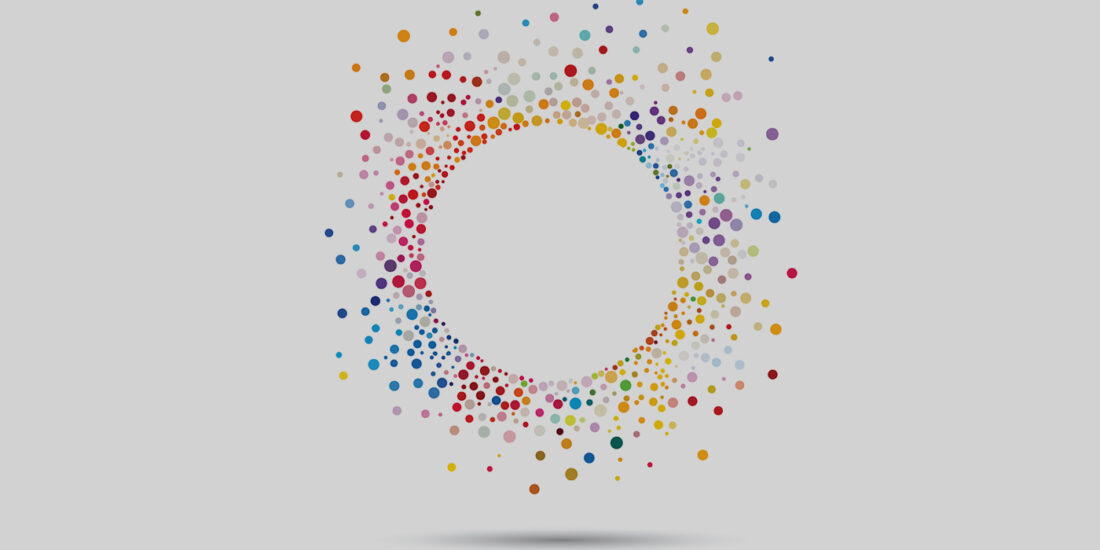How Do We Deal with Stubborn & Sphexish Family Members?
Every family is as unique as its members. However, when advising families in business, we sometimes find similar challenges and complexities to address. One of them is stubborn and sphexish family members.
But, what is a stubborn, sphexish family member? An individual—or group of persons, i.e. a branch of a family—who, despite the fact that the “whole” family is intending to go in one direction, deliberately acts against the group. Why? Because the naysayer is being forced out of a comfort zone, hence exhibiting vulnerabilities and pushing to work harder—or in a completely different way.
In a statement: A stubborn, sphexish family member or branch tends to feel threatened when a change in the status quo is proposed; when the family in business is prepared to evolve or when the business needs to be rejuvenated… and he or she reacts accordingly.
So the question here for us, family business practitioners and consultants, is: How do we deal with these family members? How do we make them understand that their views and inner beliefs may not be aligned with what the family needs, wants and aspires to and that their inner fears may be just illusions? How do we make them visualize that whatever change the family as a whole is promoting—either at the business or family level—will eventually benefit them? How do we prevent them from creating “negative” family conflict and/or endless discussions during consulting sessions in order to derail the decision-making process and/or to create a false self-victimization situation (victim playing)?
I’m sure each one of us has different ways to handle these events. In this article, I want to share with you some of mine—which I’ve developed, experienced and tested over the past ten years.
1. UNDERSTAND THEM: “In order to serve, you have to understand.”
Each family—or even family branch—has a particular way of handling crisis and emotions. Hence, each family develops a characteristic set of standpoints; behaviors and emotional attitudes (family capabilities) so the members of that family will share the same ways of thinking as well as similar behavioral and emotional habits. Accordingly, stubbornness and sphexishness are learned within the family or family branch context, being passed on unintentionally from parents to siblings. Consequently, if you want to be able to help and break old patterns, you need to “really” comprehend:
a. The underlying motives driving a behavior;
b. The actors within the family dynamics who fostered or are still fostering it (mom, dad, etc.); and
c. The actors or situations that may inhibit that response or break the unhealthy action pattern.
So, in a nutshell, observe and analyze the family dynamics: “You need to know what to fix, how to fix it—directly or indirectly—and how much time it will take”
2. USE THE “RIGHT” STRATEGY: “It all depends on the level of stubbornness/sphexishness.”
Stubbornness and sphexishness are usually related to a deep fear of loss and deprivation. These feelings may be rooted in a lengthy history of anxiety and insecurity. Thus, knowing the family history and social background will help you select the “right” strategy to deploy with that individual or family branch opposing the change. Depending on a mix of the personality, beliefs, feelings and exhibited behaviors of the family member(s), the consultant or advisor may choose to:
a. Reason with him/her or them (Low stubbornness/sphexishness)
i. Listen to the individual or family branch concerns. Analyze and evaluate them in a deep, understanding manner and genuinely try to solve them.
ii. Talk to the individual or family branch and expose the benefits of the proposed change in the short, medium and long term. If possible create a table demonstrating the pros and cons of the decision.
iii. Devise new ways in which the “change” will contribute to create a more stable family system, putting emphasis on the fact that the family will develop as a whole new tangible, intangible or psychological resources that will help it to better handle its relationships in the family and business settings.
b. Recommend and guide a “mediation” process (Low to medium stubbornness/sphexishness)
i. Lay down the conditions for the meeting. Where are we? What are the main challenges we are facing? How did we get here? Where do we want to go? What do we want to obtain from this voluntary, cooperative process? What alternative solutions can we figure out?
ii. Focus NOT on emotions or persons, but on collective/shared interests. Establish as the main objective a win-win situation where both parties (individual or family branch and “the whole family”) will exchange and evaluate ideas. Concessions, exchanges and takeaways must be based on the best interest of the family and the business.
c. Deal with self-victimization (playing the victim) in a positive way (Medium to high stubbornness/sphexishness)
i. Judge facts not emotions or feelings.
ii. Detect “arousal” actors: anger and distrust of family members can be stimulated by “other” people. Find out who is stimulating the “victim” to play his/her role.
Comments such as “They never take your ideas into consideration”… “They don´t care about your interests”… “Who do they think they are in order to decide this issue?” “We are the only ones affected by this decision”, would give you hints regarding who may be strengthening negative emotions—therefore blocking the family-in-business negotiation process. Beware of in-laws, close friends or even next generation members who want to control the situation and impose their will.
iii. If everything fails, face the victim and try to make him/her or them responsible for their actions. A confrontation strategy should be used only when all other methods have been employed with no benefits at all (not even minor advances).
3. DO NOT TOLERATE EMOTIONAL BLACKMAIL — “Stop the I-want-what-I-want-when-I-want-it behavior” – (High stubbornness/sphexishness)
The potential for emotional blackmail rises dramatically during family and business change periods, e.g., when the family in business is defining or adapting its family constitution. But, what do we mean by emotional blackmail? Emotional blackmail is a form of psychological manipulation where a close person (or a group of persons) uses threats, punishments, and/or specific information in an attempt to control the whole family’s’ behavior.
A few ways of exerting emotional blackmail include:
- Yelling as a form of ending a discussion—and not letting the others reply to an argument;
- Lying on purpose in order to harm others’ reputation or manipulate data or information to their own benefit;
- Threatening the whole family, e.g., “if you don’t do X, then there will be conflict… and this family will break down; “
- Punishing the family in different ways, e.g., not attending an important family meeting); and
- Enlisting allies, e.g., looking for people who support them and/or “similar” situations to prove they are right).
Who could be potential emotional blackmailers? Overprotected and spoiled individuals who have had everything and who have not learned to handle any kind of loss. Hence, when they feel vulnerable, they freak out and turn to blackmail. That’s exactly why emotional blackmailers tend to focus totally on their needs, their desires (demands) and don’t seem to be interested in a) “the whole family” needs, and b) how their pressure is affecting the family relationship or the business operation.
Since emotional blackmail is based on fear, obligation and guilt, the best way to deal with it is not admitting or even accepting such demands. Emotional blackmail will not work if the family prevents it from happening and does not participate in it.
4. KNOW YOUR LIMITS… AND DO NOT FORCE THE ISSUE: “It’s not your family; it’s theirs”
Be aware that even when, as a practitioner you CAN intervene into the family business dynamics, YOU have NO power whatsoever to change their minds—especially if they collectively don’t want to do so…or if it is too painful for them to bear.
As a result, from time to time you will find families in business where the best option is just to help them sometimes (during crises) and let them, a lot of the time, continue with their usual, stable, “conflictive” way of living. Nonetheless, it’s your responsibility and obligation to tell them explicitly and respectfully what you see in their family and business interactions—and explain why such behaviors may impact their future negatively. With that knowledge in mind, and with your periodic advice, they may find a way to evolve as a business family. They will adapt or find a stable way of living, even if it means a conflictive way of living.
So, keep trying! It’s definitely worthwhile!
[1]Douglas Hofstadter, of Indiana University, coined the word “sphexish” to describe (animal) repetitive irrational behavior. When applied to us, humans (rational animals), we see that this irrational response may repeat continuously and indefinitely, even when those around us share valid data demonstrating that an alternative behavior may provide more benefit.
About the contributor:
 Rosa Nelly Trevinyo-Rodríguez is CEO of Trevinyo-Rodríguez & Associates, an organization that advises and educates business families, and founder of the TEC de Monterrey Family Business Center. She is the author of the book Family Business: A Latin-American Vision (Empresas Familiares: Visión Latinoamericana). Her main research interests include wealth management in family business contexts, as well as business families’ next generation members training. Rosa Nelly can be contacted at [email protected].
Rosa Nelly Trevinyo-Rodríguez is CEO of Trevinyo-Rodríguez & Associates, an organization that advises and educates business families, and founder of the TEC de Monterrey Family Business Center. She is the author of the book Family Business: A Latin-American Vision (Empresas Familiares: Visión Latinoamericana). Her main research interests include wealth management in family business contexts, as well as business families’ next generation members training. Rosa Nelly can be contacted at [email protected].




